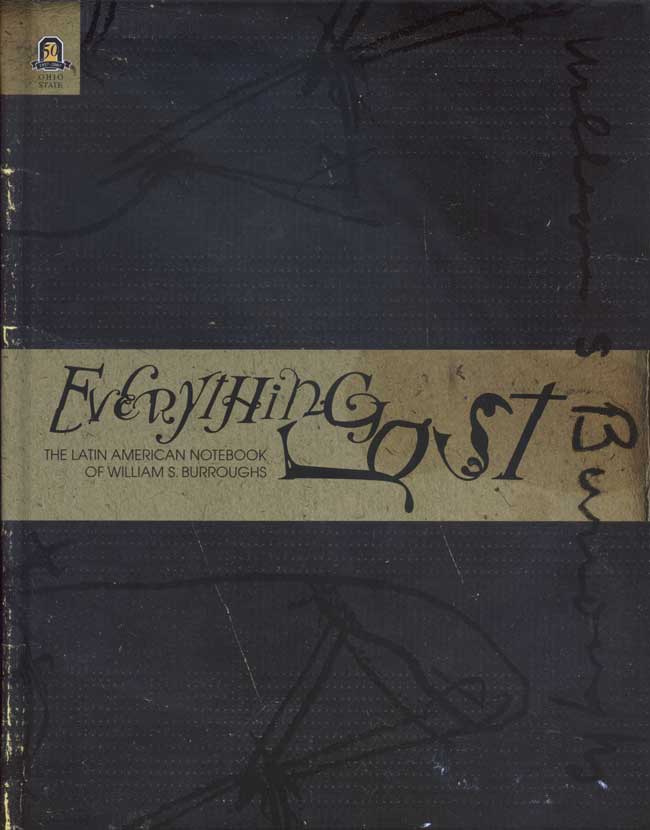Everything LostThe Latin American Notebook of William S. BurroughsWilliam S. Burroughs
|
 Dec 2007 Literary Criticism/American/General 217 pp., 110 color illus., 6x9  $69.95 cloth 978-0-8142-1080-2 Add cloth to shopping cart Shopping Cart Instructions Review/Change Shopping Cart & Check-out | |||
|
“Everything Lost is beautifully bound and packaged, and . . . its content is invaluable to fans and scholars of Burroughs’ work . . . . A disturbing impressionist travelogue, a flawed but brilliant prose poem, and one writer’s beginnings all at once, the notebook gives us a taste of the real Burroughs, pure and uncut.” —The Georgia Review “From the opening page we immediately get an extraordinarily vivid picture of Burroughs himself, sitting alone in some dingy bar in the Peruvian coastal town of Talara, pencil in hand—his ‘rum’ in the other—pressing his thoughts and observations onto the paper in his own, instantly recognizable style.” —from the Introduction by Oliver Harris In late summer 1953, as he returned to Mexico City after a seven-month expedition through the jungles of Ecuador, Colombia, and Peru, William Burroughs began a notebook of final reflections on his four years in Latin America. His first novel, Junkie, had just been published and he would soon be back in New York to meet Allen Ginsberg and together complete the manuscripts of what became The Yage Letters and Queer. Yet this notebook, the sole survivor from that period, reveals Burroughs not as a writer on the verge of success, but as a man staring down personal catastrophe and visions of looming cultural disaster. Losses that will not let go of him haunt Burroughs throughout the notebook: “Bits of it keep floating back to me like memories of a daytime nightmare.” However, out of these dark reflections we see emerge vivid fragments of Burroughs’ fiction and, even more tellingly, unique, primary evidence for the remarkable ways in which his early manuscripts evolved. Assembled in facsimile and transcribed by Geoffrey D. Smith, John M. Bennett, and Burroughs scholar Oliver Harris, the notebook forces us to change the way we see both Burroughs and his writing at a turning point in his literary biography. William Burroughs is recognized as one of the most innovative, politically trenchant, and influential artists of the twentieth century. Born in 1914 into a social register St. Louis family, he became a key figure, along with Jack Kerouac and Allen Ginsberg, in the Beat Generation of writers who emerged in the early 1950s. After leaving America, Burroughs documented his experiences as a heroin addict and a homosexual in Junky and Queer, and his adventures in South America seeking the drug yagé in The Yage Letters, before achieving international notoriety in 1959 with Naked Lunch. Based in Paris, Burroughs then launched his cut-up project and, inspired by the artist Brion Gysin, produced a trilogy of novels—The Soft Machine, The Ticket That Exploded, Nova Express—as well as experiments in tape, film, and photomontage. Having lived in Mexico, Morocco, and Europe, in the 1970s Burroughs returned to America, where he eventually settled in Lawrence, Kansas. He completed a final trilogy of novels—Cities of the Red Night, The Place of Dead Roads, The Western Lands—as well as collaborating with many artists in various media. He died on August 2, 1997. | ||||

